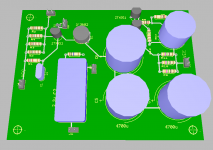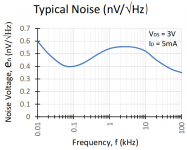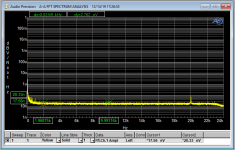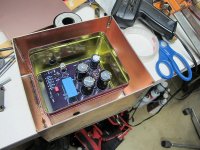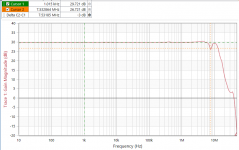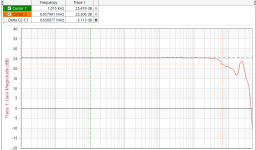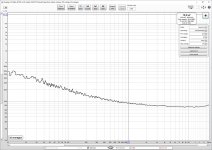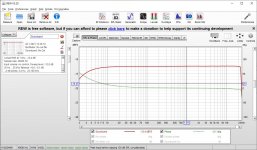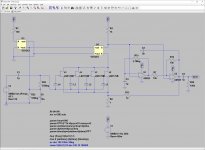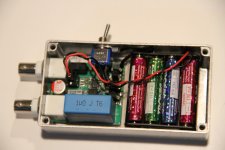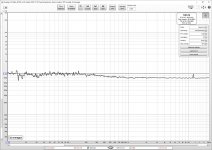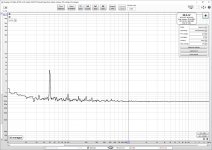Hi, jackinnj, there will be a new try before xmas. 
I'll reserve you 2 of them.
Meanwhile, I have found the reason for the underperformance
of the IF3602. It's not my amplifier or current source and the
capacitor problem is eliminated as can be seen in the other thread.
No, Interfet have adjusted their data sheet to reality.
< IF3602 InterFET | Mouser Deutschland >
Now it's 500 pV/rtHz, and only typical, and with an unexplained
hump between 1 and 10 KHz.
That means the IF3602 is no longer interesting. Not at this price
and not with this Ciss. I wonder what they do with this much
silicon. 4 BF862 can better this.
OK, I got 350pV for one pair @ 35 mA total. That fits more or less.
regards, Gerhard

I'll reserve you 2 of them.
Meanwhile, I have found the reason for the underperformance
of the IF3602. It's not my amplifier or current source and the
capacitor problem is eliminated as can be seen in the other thread.
No, Interfet have adjusted their data sheet to reality.
< IF3602 InterFET | Mouser Deutschland >
Now it's 500 pV/rtHz, and only typical, and with an unexplained
hump between 1 and 10 KHz.
That means the IF3602 is no longer interesting. Not at this price
and not with this Ciss. I wonder what they do with this much
silicon. 4 BF862 can better this.
OK, I got 350pV for one pair @ 35 mA total. That fits more or less.
regards, Gerhard
Attachments
Interfet told me that part was first invented for IR telescope imaging on satellites. It was operated at a very low temperature so there may be aspects that are not obvious. Also they said at the time they were operating a 2" line so customizing a process for a wafer was not a big issue. I bought a wafer of matched transistors from them (25 years ago) for a reasonable price. I don't know if they still operate that way.
2 ohm on-resistance, 1A Imax, 0.75S transconductance is why its a lot of silicon. Look at the table of device geometries the datasheet refers to.I wonder what they do with this much
silicon.
It was operated at a very low temperature so there may be aspects that are not obvious.
Will have to send Gerhard a dewar of liquid helium.
Will have to send Gerhard a dewar of liquid helium.
A friend of mine has used a Stirling cooler for the IR CCD arrays for his
sky photography. So it seems not to be out of reach. I'd know whom to ask.

I think I'll use a more modest approach with parallel sot-23 FETs with acceptable
Ciss and that with 2 channels and cross correlation. I still seem to do sth. wrong.
The xcorr results from the 89441A are much too optimistic.
Sorry for the good dozen of IF3602 that I have bought at €60 a pop.
Each one different. No result repeatable.
< 8pcs_IF3602 | 8 pairs of Interfet IF3602 JFETs Id vs Vgs | Gerhard Hoffmann | Flickr >
500pV/rtHz is the result of 4 BF862 or the new ones from ON, but with 60 pF Ciss
and not with 700 pF. OK, 1/f may be better, but there is this hump until 10 KHz
which could explain what I have seen: a plateau which then merged with 1/f
on the left side (which i suspected my source CCS for.)
Nobody can use the 1A, it would burn the chip. When I reduce that to 35
or even 50 mA, the gm also drops from 750 mS to sot-23 comparable values.
(abt. square root of current ratio)
And Fred Bartoli complained about the same thing 10 years ago in
sci.electronics.design on usenet.
I need a beer now. Gerhard

Last edited:
A friend of mine has used a Stirling cooler for the IR CCD arrays for his
sky photography. So it seems not to be out of reach. I'd know whom to ask.

Been there, done that, used Peltier cooling elements. Set aside the huge amount of heat that needs to be dissipated (in practice it needs forced cooling via fan) the results are definitely not worth the trouble. With the devices @-100C (200 Kelvin) the noise goes down by a factor of 1.2 This, and the intense condensation, plus ice deposits, makes this approach absolutely non practical.
No, Interfet have adjusted their data sheet to reality.
They either forgot to modify the Rds(on)=2ohm spec, or this JFET has huge manufacturing issues, leading to huge LF noise and noise corner frequency. The new Vn vs. frequency graph doesn't make any sense as it does not show the flat noise region.
Thanks for the pointer, I was about to give these Interfet things a second shot. Definitely not worth the trouble.
P.S. Modifying the data sheet on a critical parameter (the only parameter that justifies the product existence on the market, and it's price), after the product was launched and advertised is disqualifying for any company. Shame on Interfet.
Last edited:
With the devices @-100C (200 Kelvin) the noise goes down by a factor of 1.2
Sorry that would be -75C, typical of what one can get with a forced cooled Peltier element of a decent size.
If its intended application is cryogenic, then you need to look at the noise performance at those temperatures at the impedance in question.
Note that voltage noise is basically irrelevant for high impedance sources, its a byproduct of having a large silicon area. The high transconductance is probably the crucial parameter, and adequate current noise and voltage noise for the source. The flicker noise may be very temperature sensitive for instance. For use in space radiation hardness is a very important parameter too, which may be another reason for large silicon area.
Note that voltage noise is basically irrelevant for high impedance sources, its a byproduct of having a large silicon area. The high transconductance is probably the crucial parameter, and adequate current noise and voltage noise for the source. The flicker noise may be very temperature sensitive for instance. For use in space radiation hardness is a very important parameter too, which may be another reason for large silicon area.
The old data sheet provoked the impression that one could get
200 pV/rt Hz at 35 mA, with one transistor. Maybe not with each
sample but the expectation was reasonable enough to make
me buy a good dozen so I could select.
No word about cryo.
And even now, Ciss is specc'ed at 300 pF under dynamic
characteristics, measured with -4V Vgs, which is never going
to happen in praxi since the transistor is completely OFF then.
-500 +-200 mV, that's what counts.
I don't have much interest in high impedance sources &
their voltage noise but more for power supplies and sensitive
control lines. There we usually have low impedance.
But when doing cross correlation, the voltage drop over the
source impedance depends on the sum of the noise current
of both amplifiers together. And that is seen by both channels
so it won't average out.
For space radiation hardness, this area still does not help.
For the RHFL4913 made by ST, they write that a SEU will
make the regulator unpredictable on a milliseconds scale
and that the output capacitor should be large enough to
keep it safe if the regulator goes hiwire for some time.
BTDT. Large, fat, switch-proof space qualified tantalums.
The have about 6 times the volume of industrial ones.
regards, Gerhard
200 pV/rt Hz at 35 mA, with one transistor. Maybe not with each
sample but the expectation was reasonable enough to make
me buy a good dozen so I could select.
No word about cryo.
And even now, Ciss is specc'ed at 300 pF under dynamic
characteristics, measured with -4V Vgs, which is never going
to happen in praxi since the transistor is completely OFF then.
-500 +-200 mV, that's what counts.
I don't have much interest in high impedance sources &
their voltage noise but more for power supplies and sensitive
control lines. There we usually have low impedance.
But when doing cross correlation, the voltage drop over the
source impedance depends on the sum of the noise current
of both amplifiers together. And that is seen by both channels
so it won't average out.
For space radiation hardness, this area still does not help.
For the RHFL4913 made by ST, they write that a SEU will
make the regulator unpredictable on a milliseconds scale
and that the output capacitor should be large enough to
keep it safe if the regulator goes hiwire for some time.
BTDT. Large, fat, switch-proof space qualified tantalums.
The have about 6 times the volume of industrial ones.
regards, Gerhard
Last edited:
Interfet told me that part was first invented for IR telescope imaging on satellites. It was operated at a very low temperature so there may be aspects that are not obvious. Also they said at the time they were operating a 2" line so customizing a process for a wafer was not a big issue. I bought a wafer of matched transistors from them (25 years ago) for a reasonable price. I don't know if they still operate that way.
Up your neck of the woods at the Santa Rosa Airport Air Museum is an SR-71 navigation system. Way before GPS they figured where the plane was by astral navigation using the stars positioning.
Stomspiegel with one IF3601 running 32mA -- gain is 35.5dB (60x). FFT is run using AP's "FFT Scaling" macro:
How do you make a current mirror ( = Stromspiegel) from one IF3601?
Oh, Idss may be 1 A.
Sorry for your loss, Gerhard
So I ran some new tests -- turns out that somehow the zener blew.
On this occasion I adjusted the current flowing in the Vcc and Vee supplies to be about equal with Vds ~2.1V. Vee is -7.5V and Vcc +15V to deal with the rechargeable batteries I have at hand (the silver cells gave up the ghost).
I matched a bunch of BF862 for the test for Vgs off. Not surprisingly gfs was equal for the 4 devices I used. The IF3601 is the same used in the other test, but at only 20mA. Looks like it will fit the bill for a 1MHz LNA.
The first graph is IF3601, the second 4xBF862:
On this occasion I adjusted the current flowing in the Vcc and Vee supplies to be about equal with Vds ~2.1V. Vee is -7.5V and Vcc +15V to deal with the rechargeable batteries I have at hand (the silver cells gave up the ghost).
I matched a bunch of BF862 for the test for Vgs off. Not surprisingly gfs was equal for the 4 devices I used. The IF3601 is the same used in the other test, but at only 20mA. Looks like it will fit the bill for a 1MHz LNA.
The first graph is IF3601, the second 4xBF862:
Attachments
Time to resurrect this old thread.
Few years back I built Scott's LNA (see post #1) using my PCB layout.
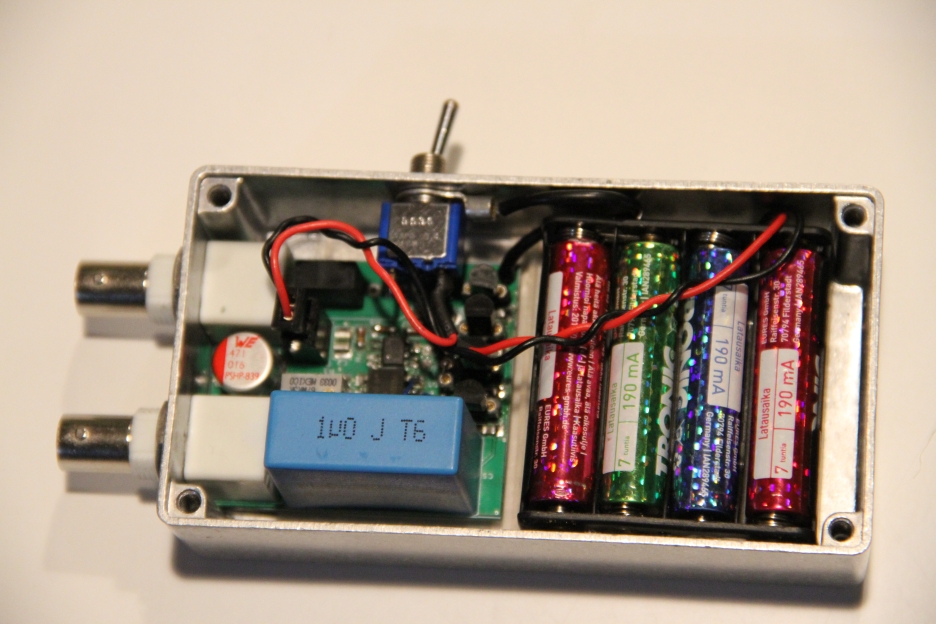
With 2SK170BL selected for low noise the noise density was about 950 pV/√Hz@1kHz with only a relatively small increase at 10Hz. With the even lower noise 2SK369 the noise density was about 850 pV/√Hz@1kHz. The LNA has served me well mainly as testing power supply or regulator noise but it has also doubled as a fet noise tester since the fet is socketed. The small size and operation from a single 9V battery is also nice (I use 8x1.2V AAA rechargeable).
But reading about the success stories with Samuel Groner's LNA I decided that it is time for a new LNA just to keep up with the Joneses (or rather Groners). The obvious choice would have been to just order Groner's LNA PCB using the gerbers that he has provided but buying ready made stuff or even PCBs is not my main MO. So I decided to pimp my existing LNA by paralleling more fets. I wanted to keep the same "form factor" so I made a new PCB that has space for 4 fets.
This is the schematic. It is Scott's original with just paralleled fets and ferrite beads at fet gates.
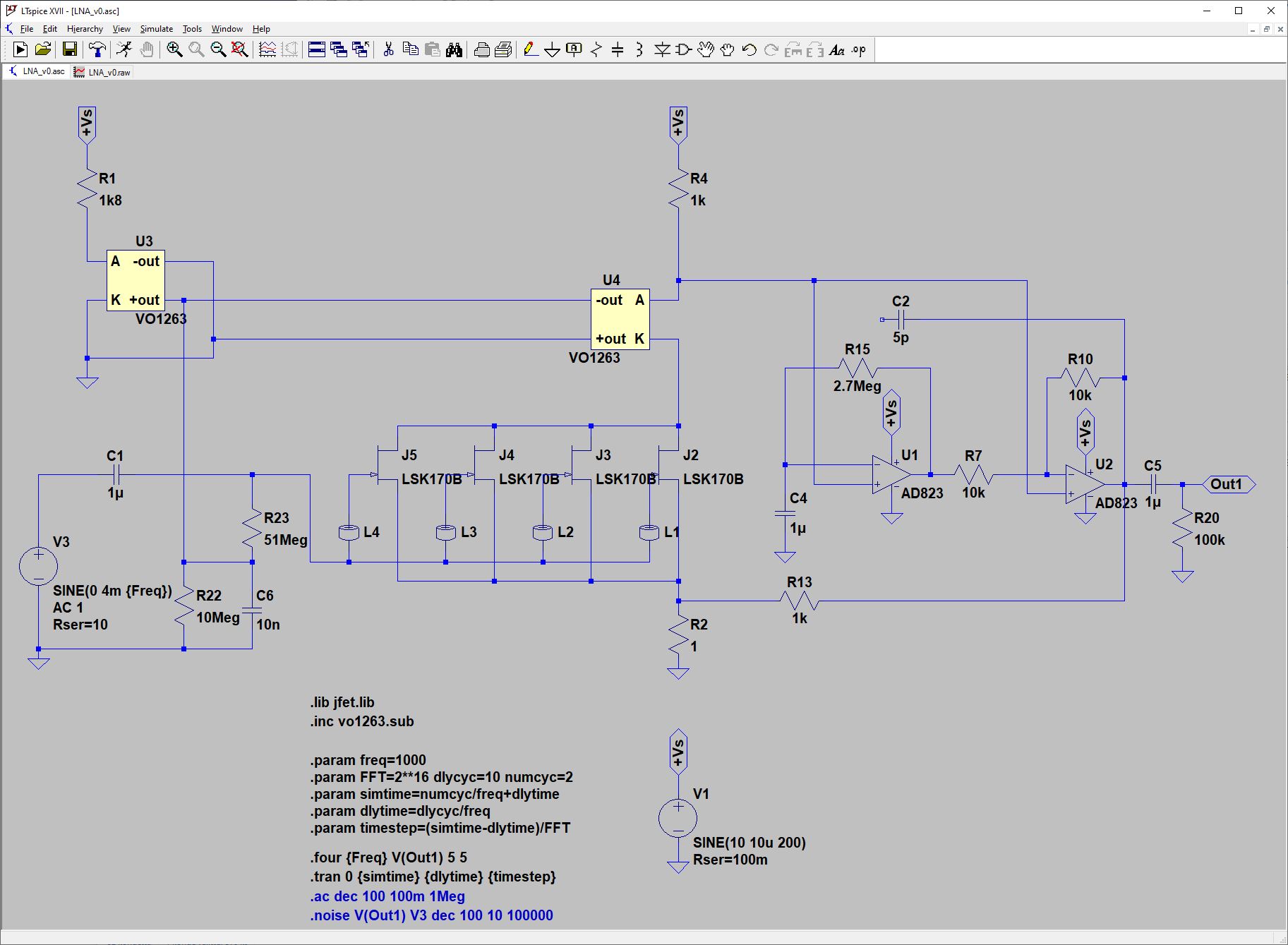
The actual pimped LNA is shown in the first picture.
When I started testing the new LNA to my dismay I noticed that 3 or 4 fets made it unstable. I tried ferrite beads with higher impedance and cap from drain to source but to no avail. Then I remembered what Scott had said about motorboating in the post #1. I lowered C6 from 100n to 10n and the instability was gone. Lowering C6 to 10n does not affect the low frequency response.
Here are the results. First some baseline measurements of my soundcard (M-Audio Audiophile 192).
Loopback frequency response:
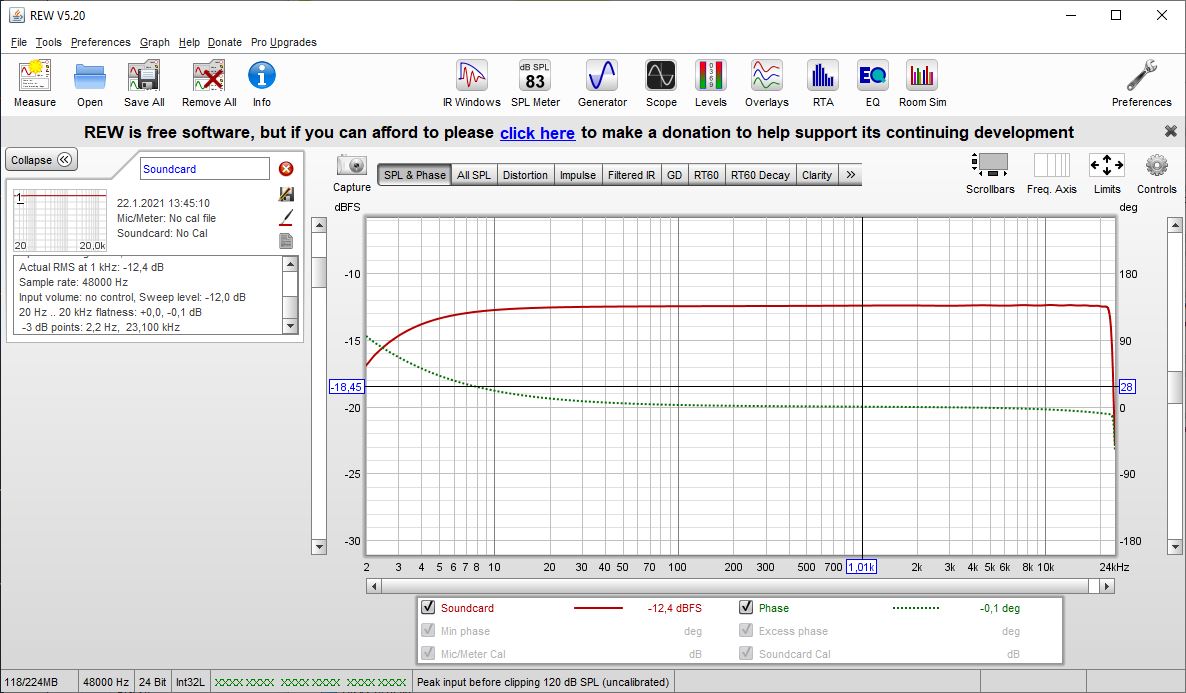
Noise with input shorted:
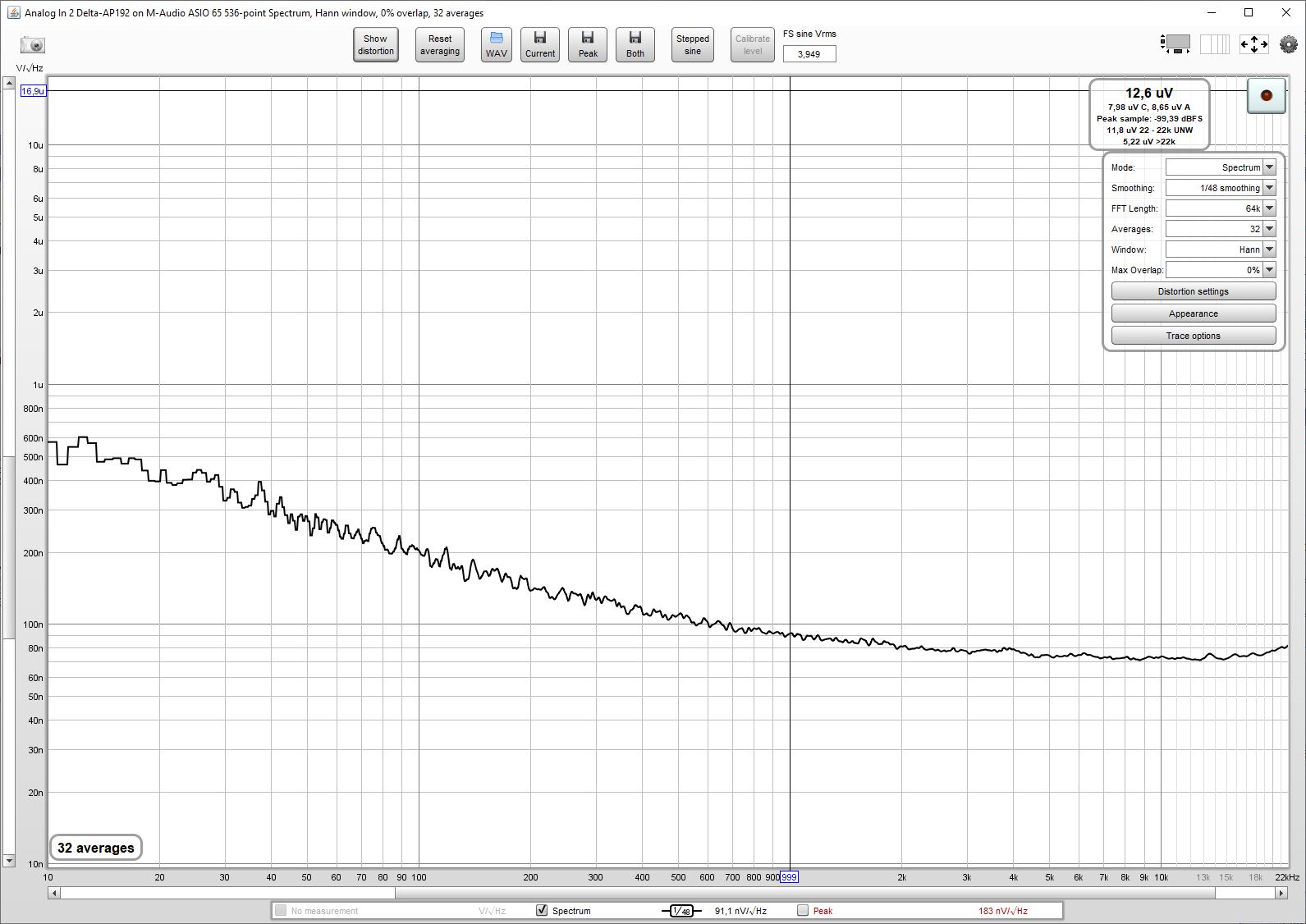
As can be seen from these the soundcard should be capable for measuring noise from 10Hz to 22kHz at well below 1nV/√Hz level if 60dB LNA is used. Below 10Hz or above 22kHz the noise starts to rise as is typical with most soundcards.
Here is the noise from my original LNA using single 2SK369V fet. BTW I used the "3dB added noise from resistor"-method to confirm the noise levels.
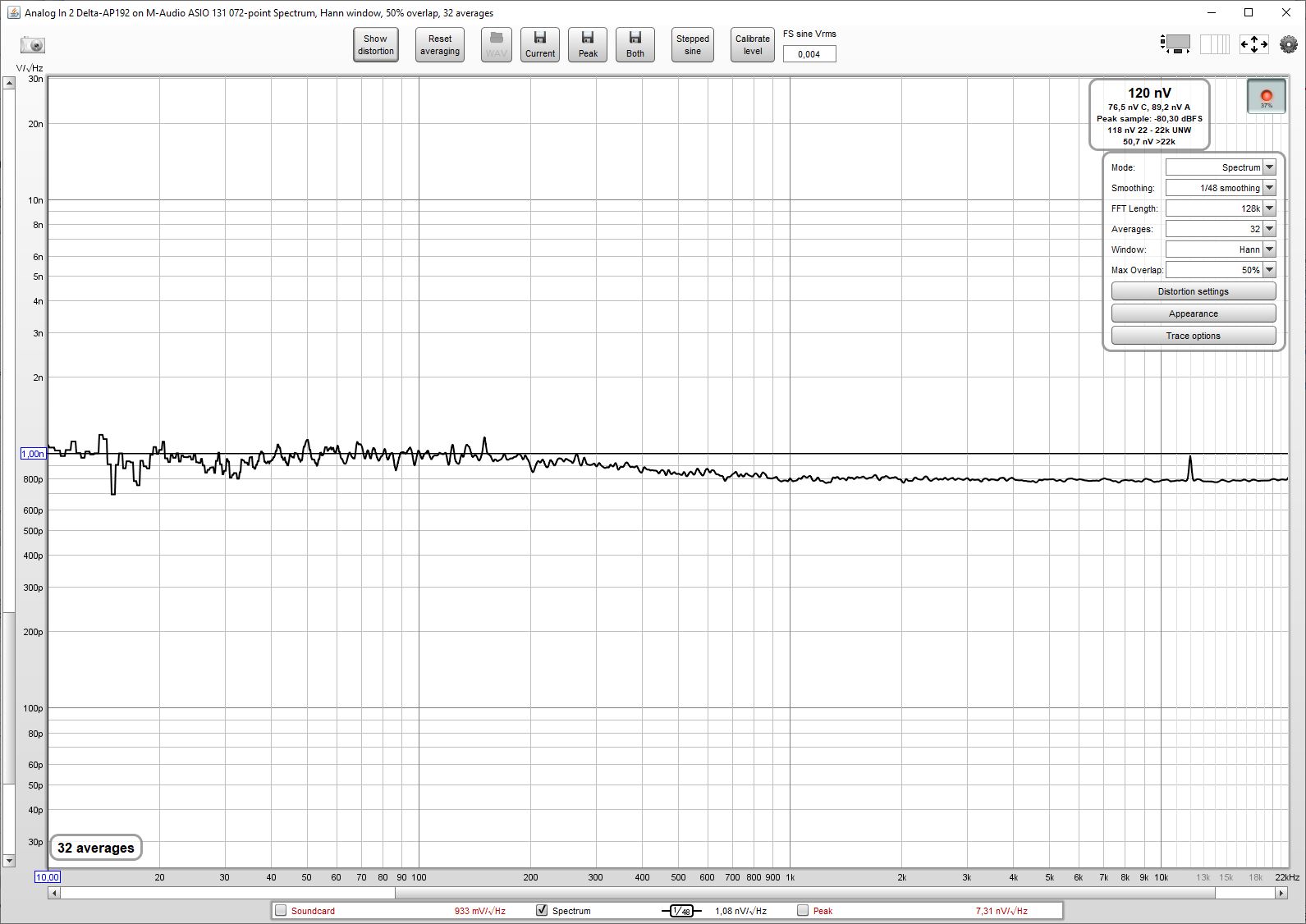
For those laughing at using diecast aluminum as LNA chassis the above was measured with the LNA in just a diecast aluminum chassis without any additional shielding (see first picture).
Here is the result of my pimped LNA using 4 paralleled 2SK170BL fets selected for low noise.
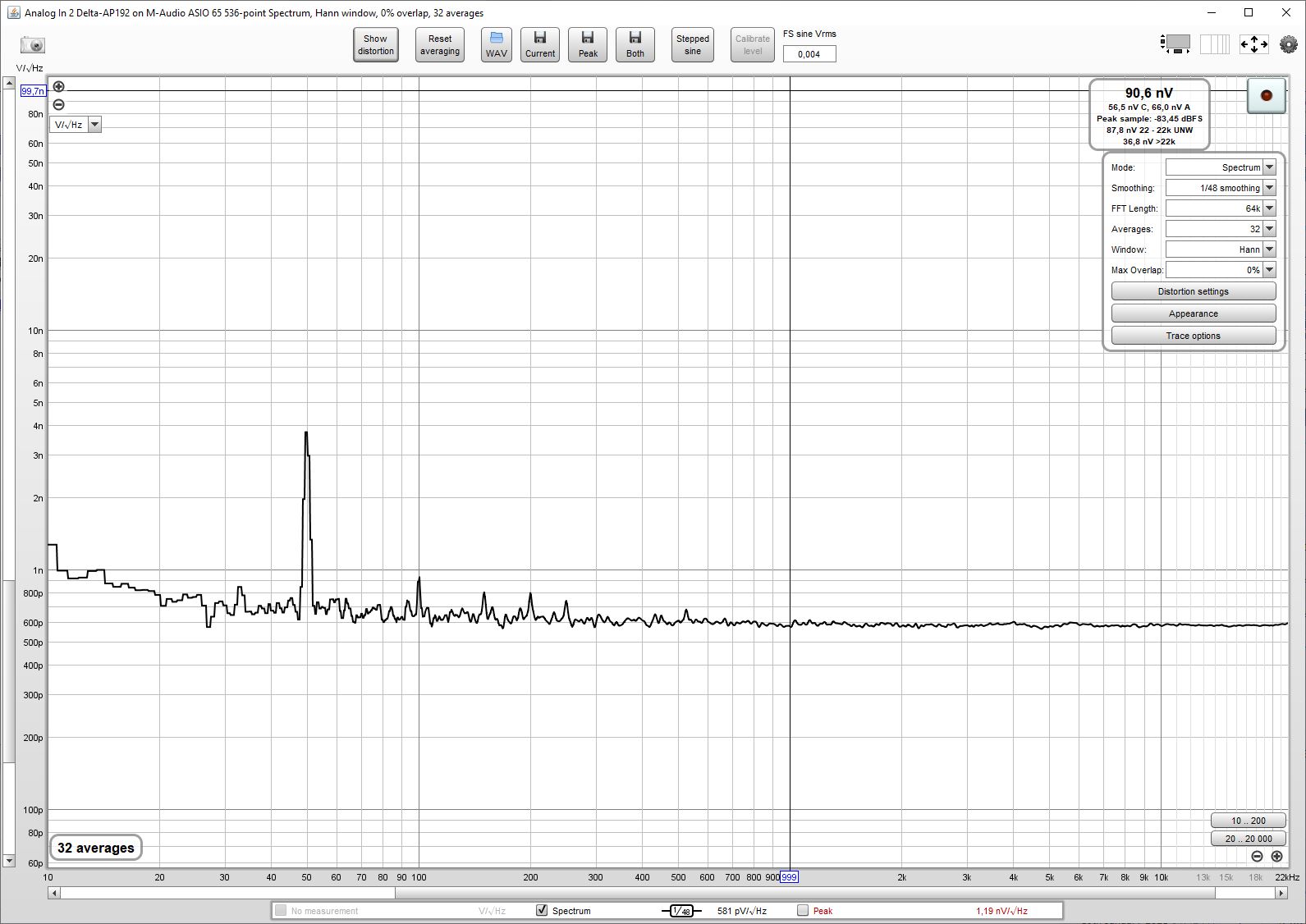
The noise density is about 600 pV/√Hz@1kHz. It would have been nice to go below 500 pV/√Hz but it seems that other noise factors are creeping in. Anyhow even this result is very satisfactory since I was not looking for a lab-grade equipment. The 50Hz peak can be removed with more appropriate shielding.
I also built another LNA with 8 parelleled BF862s using the same circuit. The result were however much worse as the BF862s (factory code 2AW) had much higher noise overall and very steep rise below 100Hz. I also tried 2SK3557s but they had similar noise profile as the BF862s.
Few years back I built Scott's LNA (see post #1) using my PCB layout.
With 2SK170BL selected for low noise the noise density was about 950 pV/√Hz@1kHz with only a relatively small increase at 10Hz. With the even lower noise 2SK369 the noise density was about 850 pV/√Hz@1kHz. The LNA has served me well mainly as testing power supply or regulator noise but it has also doubled as a fet noise tester since the fet is socketed. The small size and operation from a single 9V battery is also nice (I use 8x1.2V AAA rechargeable).
But reading about the success stories with Samuel Groner's LNA I decided that it is time for a new LNA just to keep up with the Joneses (or rather Groners). The obvious choice would have been to just order Groner's LNA PCB using the gerbers that he has provided but buying ready made stuff or even PCBs is not my main MO. So I decided to pimp my existing LNA by paralleling more fets. I wanted to keep the same "form factor" so I made a new PCB that has space for 4 fets.
This is the schematic. It is Scott's original with just paralleled fets and ferrite beads at fet gates.
The actual pimped LNA is shown in the first picture.
When I started testing the new LNA to my dismay I noticed that 3 or 4 fets made it unstable. I tried ferrite beads with higher impedance and cap from drain to source but to no avail. Then I remembered what Scott had said about motorboating in the post #1. I lowered C6 from 100n to 10n and the instability was gone. Lowering C6 to 10n does not affect the low frequency response.
Here are the results. First some baseline measurements of my soundcard (M-Audio Audiophile 192).
Loopback frequency response:
Noise with input shorted:
As can be seen from these the soundcard should be capable for measuring noise from 10Hz to 22kHz at well below 1nV/√Hz level if 60dB LNA is used. Below 10Hz or above 22kHz the noise starts to rise as is typical with most soundcards.
Here is the noise from my original LNA using single 2SK369V fet. BTW I used the "3dB added noise from resistor"-method to confirm the noise levels.
For those laughing at using diecast aluminum as LNA chassis the above was measured with the LNA in just a diecast aluminum chassis without any additional shielding (see first picture).
Here is the result of my pimped LNA using 4 paralleled 2SK170BL fets selected for low noise.
The noise density is about 600 pV/√Hz@1kHz. It would have been nice to go below 500 pV/√Hz but it seems that other noise factors are creeping in. Anyhow even this result is very satisfactory since I was not looking for a lab-grade equipment. The 50Hz peak can be removed with more appropriate shielding.
I also built another LNA with 8 parelleled BF862s using the same circuit. The result were however much worse as the BF862s (factory code 2AW) had much higher noise overall and very steep rise below 100Hz. I also tried 2SK3557s but they had similar noise profile as the BF862s.
Attachments
- Home
- Design & Build
- Equipment & Tools
- My version of the G = 1000 low noise measurement amp (for Ikoflexer)
